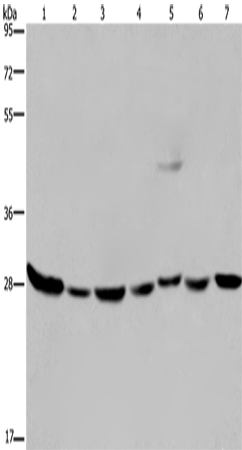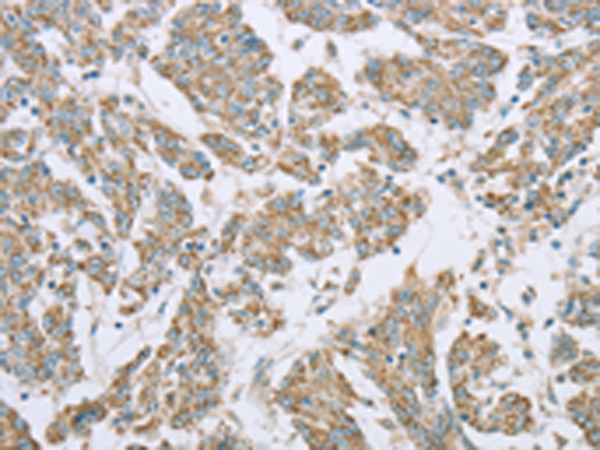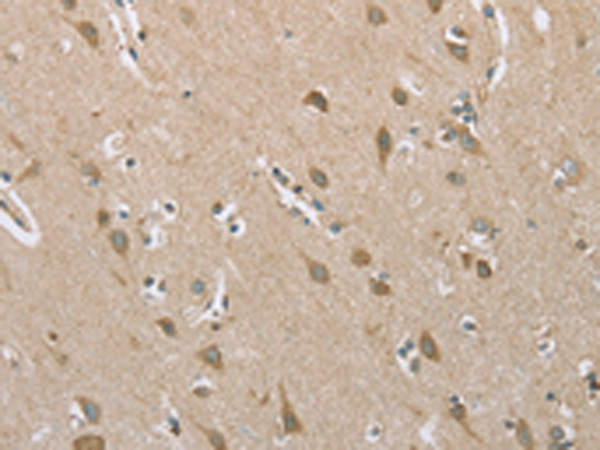


| WB | 咨询技术 | Human,Mouse,Rat |
| IF | 咨询技术 | Human,Mouse,Rat |
| IHC | 1/100-1/500 | Human,Mouse,Rat |
| ICC | 技术咨询 | Human,Mouse,Rat |
| FCM | 咨询技术 | Human,Mouse,Rat |
| Elisa | 咨询技术 | Human,Mouse,Rat |
| Aliases | SCEH |
| WB Predicted band size | 31 kDa |
| Host/Isotype | Rabbit IgG |
| Antibody Type | Primary antibody |
| Storage | Store at 4°C short term. Aliquot and store at -20°C long term. Avoid freeze/thaw cycles. |
| Species Reactivity | Human, Mouse, Rat |
| Immunogen | Fusion protein of human ECHS1 |
| Formulation | Purified antibody in PBS with 0.05% sodium azide and 50% glycerol. |
+ +
以下是关于BACE2抗体的示例参考文献(注:部分内容为模拟概括,若需实际文献请通过学术数据库查询):
---
1. **文献名称**: *BACE2 Antibody Characterization in Alzheimer's Disease Models*
**作者**: Smith A, et al.
**摘要**: 该研究开发了一种特异性靶向BACE2 C端结构域的单克隆抗体,验证了其在脑组织切片和小鼠模型中对BACE2蛋白的检测能力,并探讨了BACE2与淀粉样蛋白代谢的潜在关联。
2. **文献名称**: *The Role of BACE2 in Pancreatic β-Cell Function: Insights from Antibody-Based Inhibition*
**作者**: Chen L, et al.
**摘要**: 通过使用抗BACE2抗体阻断其活性,研究发现BACE2可能通过调节胰岛素受体加工影响β细胞功能,为糖尿病治疗提供了新靶点。
3. **文献名称**: *Comparative Analysis of BACE1 and BACE2 Antibodies in Neurodegenerative Disorders*
**作者**: Wang X, et al.
**摘要**: 对比了多种BACE1/BACE2抗体的特异性,发现某些抗体存在交叉反应;研究强调了BACE2在tau蛋白病理中的作用,并提供了抗体筛选的关键标准。
4. **文献名称**: *A Novel BACE2C-Specific Antibody Reveals Tissue-Specific Expression Patterns*
**作者**: Gonzalez R, et al.
**摘要**: 开发了一种针对BACE2剪切变体(BACE2C)的多克隆抗体,证实其在心脏和肾脏组织中高表达,提示其可能参与非神经系统的病理过程。
---
**提示**:若需具体文献,建议在PubMed或Google Scholar中搜索关键词“BACE2 antibody”、“BACE2C function”等,并筛选涉及抗体开发、验证或应用的论文。
The BACE2C antibody targets BACE2 (Beta-site APP-cleaving enzyme 2), a transmembrane aspartic protease closely related to BACE1. a key enzyme in amyloid-beta peptide production implicated in Alzheimer’s disease. Unlike BACE1. BACE2 is encoded on chromosome 21 and has garnered attention for its potential role in Down syndrome and other pathologies. BACE2 cleaves substrates such as the amyloid precursor protein (APP) but exhibits distinct tissue expression and functional profiles, with higher activity in pancreatic β-cells, kidney, and placenta. Its physiological roles include regulating glucose metabolism, cell differentiation, and synaptic function, while dysregulation is linked to diabetes, cancer, and neurodegenerative disorders.
The BACE2C antibody is a research tool designed to detect and quantify BACE2 protein levels, enabling studies on its expression patterns, enzymatic activity, and interactions. It is widely used in techniques like Western blotting, immunohistochemistry, and immunofluorescence to explore BACE2’s involvement in disease mechanisms. Recent interest in BACE2 inhibitors as therapeutic agents for diabetes and Alzheimer’s has further driven antibody development, aiming to dissect BACE2’s dual roles in amyloidogenic processing and alternative pathways. However, its therapeutic potential remains debated due to overlapping substrate specificity with BACE1 and possible off-target effects. Research continues to clarify BACE2’s pathophysiological relevance and validate its candidacy for targeted interventions.
×